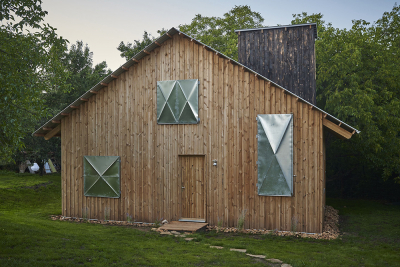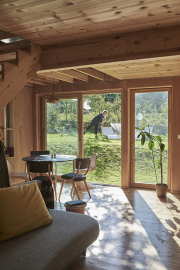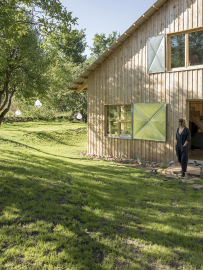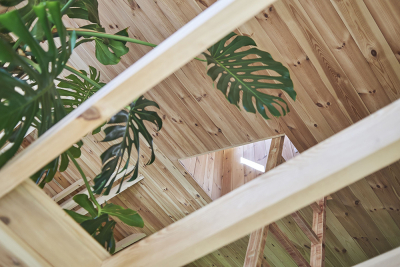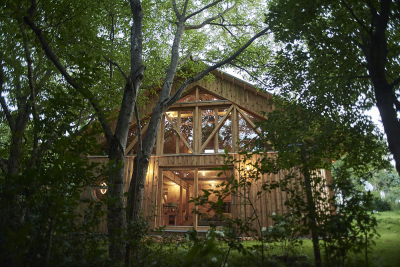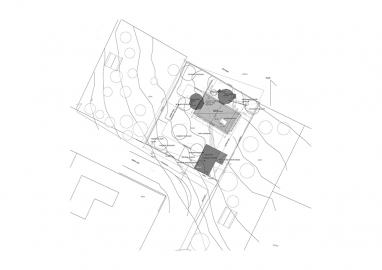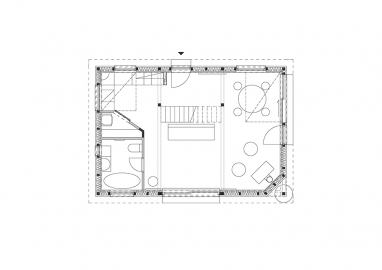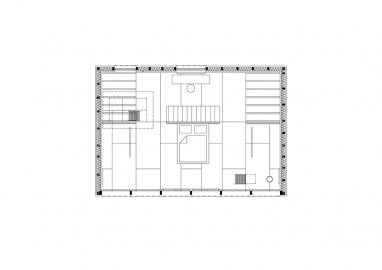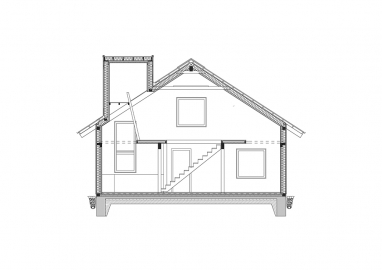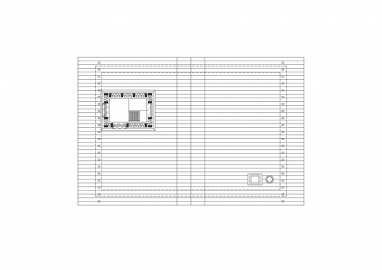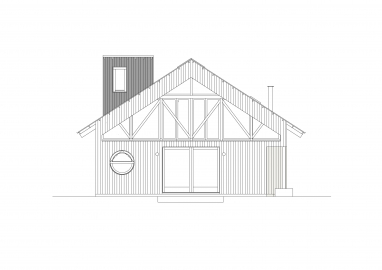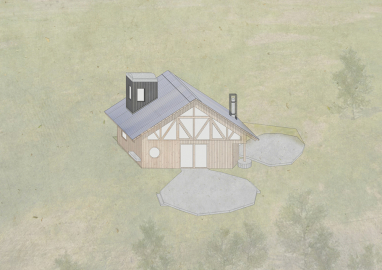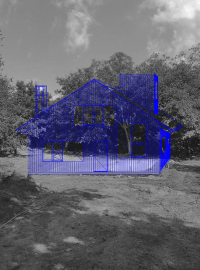The Graphic Designer’s House
Small wooden family house, near to a deep wooded ravine, in the suburb of Budapest.
This wood-frame house in Nagykovácsi, not far from the capital, was designed for a young graphic designer. As the client, she expressed her needs clearly and took an active part in the design and construction process, which came to incorporate the proportions of her design universe. The house’s mid-sized plot is at the foot of the Zsíros-hegy hill, bordered by a narrow and relatively deep wooded ravine to the north. Twenty years ago, this area was still all holiday homes, but today family homes of various shapes and sizes are springing up all around. At first sight against that background, the wooden house overlooking the ravine sticks out of the street scape, as if it were the first representative of some strange, hitherto unknown local architecture.
The house’s tripartite division played an important role in the design concept. This is manifested in the increasing calm of each level’s function as you move up through the house. The ground floor contains the living room, kitchen, and bathroom; the first floor the bedroom and study; while the “tower” is a contemplation space.
We’ve concentrated the primary functions of the house on the ground floor (kitchen, dining room, bathroom, living room, storage), while on the first floor, we’ve created a large continuous space for sleeping and working. This space, which can be subdivided into smaller rooms if needed, looks directly out at the trees of the ravine to the north through a large triangular window. Standing in this space, you feel as if the whole house were constructed with this view in mind. The house, however, presents a more traditional aspect on its street-front side. The “tower” on the third floor, accessible by a ladder, is a space for contemplation. The pierced joists and the tower’s windows make for easy circulation of air in the wooden house.
The goal with the materials of both the internal and external cladding was to maintain a natural look. For instance, the owner will only oil the external red pine cladding after the wood has dried and greyed. Overall, it’s the individual solutions and unusual use of materials that makes this architecturally apparently traditional building contemporary.

